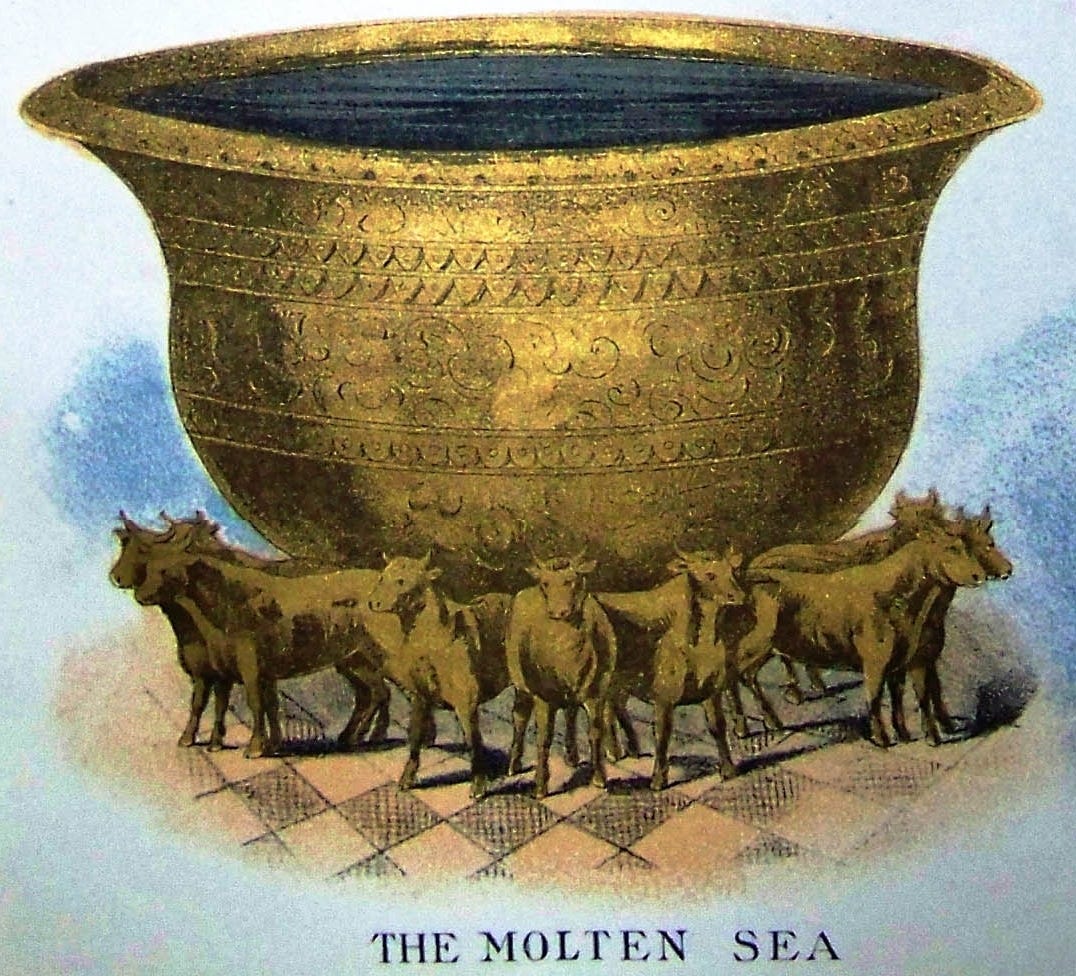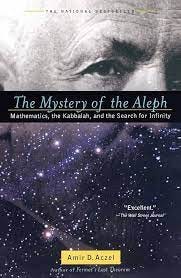The accompanying shiur is available on the Orthodox Union's parsha learning app: All Parsha.
Sefer Vayikra begins with the eponymous calling of God to Moshe.
וַיִּקְרָא אֶל־מֹשֶׁה וַיְדַבֵּר ה’ אֵלָיו מֵאֹהֶל מוֹעֵד לֵאמֹר׃
As many may already know, the letter aleph in the word “Vayikra” is written deliberately small.
And, as many ask in the opening to our parsha, why is it that the aleph in “Vayikra” is written so small?
There are, of course, many answers given.
The Baal Haturim explains that the aleph is written small out of the humility of Moshe. He writes:
א' דויקרא זעירא שמשה לא רצה לכתוב אלא ויקר כדרך שנא' בבלעם כאלו לא נראה לו השם אלא במקרה ואמר לו הקב"ה לכתוב גם באל"ף וכתבה קטנה
As Rashi also alludes, there is no greater honor in this world than being called upon by God to speak. There is a big difference between bumping into someone on the street and someone reaching out to you inquiring when you are available to talk. The former is happenstance, the latter is deliberate. God calling upon Moshe was a sign of God’s love and affection for Moshe—something that, out of Moshe’s humility, he was uncomfortable writing explicitly in the Torah. Instead, the Baal HaTurim explains, the word was written with a small aleph—making the word “Vayikra” (ויקרא) look like the word “Va’yikar” (ויקר), meaning “chanced upon.”
An additional reason is cited by the Kli Yakar: The small aleph represents children who, according to Midrash, used to begin their study of Chumash with this parsha. And just as the sacrifices brought purity, so too children represent purity. To represent the connection between our parsha and children, we have the small, childlike aleph.
These explanations are both moving and powerful but they do not fully explain the mystery of the small alef. Why here and why now?
To understand this, let’s explore the fascinating history behind the concept of infinity and its connection to Jewish thought.
I was never particularly good at math, but I have always been intrigued by numbers.
Mathematical descriptions of God and the Torah always fascinated me, particularly the concept of infinity. When I was studying in Ner Yisroel, I actually had a correspondence with Shmuel Weinberger, Professor of Mathematics at the University of Chicago, that was all about how the system of Torah differs from the system of mathematics. I remembered hearing Rabbeim describe the infinitude of Torah and I wanted to understand what that really meant. Does that mean that any idea in the Torah has a potentially infinite number of explanations?
God is described as infinite. In Tehillim, God’s wisdom is described as being beyond measure. At some point, which Gershom Scholem admits is hard to pinpoint exactly, references to God Himself, so to speak, use the term infinity, or eyn sof (אין סוף). As Sandra Valabregue-Perry convincingly details in her article, “The Concept of Infinity (Eyn-sof ) and the Rise of Theosophical Kabbalah,” the notion of God as infinite finds its most clear articulation in kabbalistic literature, particularly, in Sefer Yetzirah.
Infinity in this context is not the mathematical infinity, but rather the divine unity that underlies all of reality. “To be unified is synonymous with infinity,” Valabregue-Perry writes of the concept of eyn sof, “and to be separated is synonymous with being finite.” Even within our finite experience, we remain connected to the unspeakable divine. Eyn sof, in this reading, is not uncountable but omniscient and accessible. “Eyn-Sof opens up a bridge rather than a chasm,” she writes. Even our seemingly finite existence remains tethered to transcendence.
Mathematical infinity has its own fascinating history—one that intersects, as we shall see, with both Jewish thought and law.
Zeno of Elea is credited with a paradox that helps explain why the notion of infinity was so troubling for mathematicians. His paradox, known as Zeno’s Paradox, goes as follows: Imagine you want to walk from one end of a room to the other. Before you can get there, you need to cover half the distance. Then, before you cover that remaining half, you need to cover half of that distance, and so on, ad infinitum, forever. Zeno argued that if you keep dividing the distance into halves, you'll never reach the end because there will always be another half to cover. However, this paradox has been resolved through mathematical understanding. In real-life situations, we do reach destinations despite the infinite divisions suggested by Zeno's Paradox. We understand that the sum of an infinite series (the sum of all those half-distances) can converge to a finite value, allowing motion to occur in finite time.
Pythagoras attributed divine significance to numbers. Whole numbers were seen as the expression of God in the world. When irrational numbers, a type of real number that cannot be expressed as a simple fraction or ratio of two integers, were discovered it created a major controversy. Such numbers, like the square root of 2, could not be expressed by fractions and went on forever, were seen as ungodly. When Hippasus, a member of the Pythagorean Society, divulged the existence of irrational numbers, he was drowned at sea as a punishment, or so the story goes.
Undoubtedly the most famous irrational number is pi (π), a special number in mathematics that's used to describe the relationship between a circle's circumference and its diameter. For those who haven’t been involved in high school math for some time, pi is the ratio between the circumference of a circle (the distance around the circle) and its diameter (the line that goes straight through the center of the circle, touching two points on the edge). Now, no matter how big or small the circle is, if you divide the circumference by the diameter, you'll always get the same number: approximately 3.14159, but it goes on infinitely without repeating. That number is called pi, and we represent it with the Greek letter π.
There has been much debate about the Torah’s knowledge of pi. In Sefer Melachim (7:23), the Book of Kings, we are given the dimensions of the Yam shel Shlomo, the Pool of Shlomo, which he built for the Beis Hamikdash. We’re told that the Yam shel Shlomo had a diameter of 10 amos and a circumference of 30 amos—seemingly calculating pi with the number 3. Similarly, the Mishnah in Eruvin also seems to approximate pi as 3. Did the Torah just approximate the number or was it unaware of the irrational number pi?
Morris Engelson, in his article, “The Pool of Shlomo HaMelech and the Value of π,” presents several solutions to this question. One ingenious solution attributed to the Vilna Gaon, but more likely first suggested by Rabbi Matisyahu (Max) Munk, points out that the description of the Yam shel Shlomo is written differently than it is pronounced, a distinction known as ksav and kri. If you take the word used in the verse for circumference, it is pronounced קָו but it is spelled קוה. Now, if you take the numerical value of the two words (קָו=106 // קוה=111) and multiply it by 3, the Torah’s approximation of pi you actually get a value that is incredibly close to the true value of pi: 3(111/106) = 3.1415. It may be a hidden testament to the Torah’s mathematical knowledge or a very improbable coincidence, but this suggestion is certainly brilliant.
Irrational numbers and infinity challenged the concrete reality that many expected math to produce.
When I was in high school, I read a book that I still think about today. Amir D. Aczel’s The Mystery of the Aleph: Mathematics, the Kabbalah, and the Search for Infinity, introduced me to a mysterious and misunderstood mathematician named Georg Cantor and his work in understanding the nature of infinity. Georg (pronounced “gay-org”) suggested something radical: there is more than one kind of infinity. In fact, he suggested, some infinities are more infinite than others.
Imagine you have a line with numbers on it, like 1, 2, 3, 4, and so on, stretching forever in both directions. This line represents what we call "countable infinity." It's like counting numbers—no matter how high you count, there's always another number to count. This goes for the list of whole numbers (1,2,3,4) as it goes for the list of odd numbers (1,3,4,5) and the list of even numbers (2,4,6,8). Each of these lists is both infinite and countable. That’s what Cantor means by a countable infinity.
But Cantor thought about a different kind of infinity, called "uncountable infinity." Imagine you have a line, not with numbers, but with all the points on a line segment. Now, try to count them. You might think you can start at one end and count each point one by one, but Cantor showed something really surprising: you can't! Even if you tried to count them forever, there would always be more points left. There are an infinite amount of numbers that lie between the numbers 1 and 2—they are just not countable!
Cantor called these uncountable infinities "higher infinities." He developed a way to compare the sizes of different infinities, showing that some infinities are actually bigger than others. This was a revolutionary idea because, before Cantor, people thought of infinity as just one big thing. Cantor's theory of infinity showed that there are different levels of infinity, some bigger than others, and it changed the way mathematicians think about the concept of infinity.
But here is the amazing part. Cantor needed mathematical notation to symbolize the different orders of infinity. Most mathematics used Greek notation like π (pi), Σ (Sigma) used to symbolize summation, and Δ (Delta) to symbolize change. Cantor, quite shockingly, chose a different form of notation for infinity. He used the Hebrew letter א (aleph).
Many have speculated about Cantor’s Jewish identity. His last name Cantor and his use of Hebrew notation certainly suggests some connection to Jewish thought. Still, most biographers struggle to find any real connection to Jewish lineage, although he was clearly a religious man.
Cantor’s ideas about infinity were controversial in his lifetime. His chief adversary, Leopold Kronecker, thought his ideas about higher orders of infinity drifted into the fantastical. "God made the integers,” Kronecker famously said, “all else is the work of man." Interestingly, Rabbi Adin Steinzaltz was once asked if the Torah makes mention of irrational numbers or transcendental numbers. Rabbi Steinzaltz responded by quoting Kronecker, “Die ganzen Zahlen hat der liebe Gott gemacht, alles andere ist Menschenwerk—God made the integers, all else is the work of man.”
The opposition to Cantor’s ideas took a heavy toll on his mental health. He struggled with bouts of depression. He spent much of his later life manically trying to determine the true author of Shakespeare’s works. There were even periods when he had to be institutionalized.
History, however, looks favorably at the genius of Cantor. David Hilbert, one of the most renowned mathematicians of his time, convened a list of 23 problems that continued to vex mathematics and should be explored in the 20th century. The first problem on his list was a deeper understanding of Cantor’s work, the significance of which Hilbert continued to defend.
Cantor ventured into infinity, saw a glimpse, and paid a very heavy personal price. To this day Cantor’s theory and his small aleph are used in mathematic explorations into the concept of infinity.
Let’s return to our aleph.
In Rav Kasher’s encyclopedic work Torah Sheleimah, he cites a fascinating approach that explains the small aleph in the opening word of our parsha. The Talmud says that there are 50 gates of divine understanding, all of which were given to Moshe, except one. Our small aleph, this approach suggests, represents that 50th gate that was never fully given over to Moshe.
As Valabregue-Perry cites in her article from the Sefer haBahir, the aleph in kabbalistic literature, doesn’t make a sound—it contains within it the root of all other letters, the infinite that contains all finite multitudes.
So why include an aleph at all if the 50th gate wasn’t given to Moshe?
As Cantor taught, there are orders of magnitude in infinity itself. And while Moshe was not given full access to the complete expression of the Infinite Divine, he was still able to grasp some notion of the infinite when being called upon by God.
And this is true for each of us as well. We may never be able to confront the infinite depth of a confrontation with God, but each of us has that aspect of Moshe within us, and each of us, in our own way, is called upon by God. And even within our very finite understanding and limited humanity, we are still able to glimpse a moment with the infinite, transcendent God.
A Purim Addendum
Megillas Esther ends in a bizarre way. The very conclusion of Esther discusses the tax policies of Achashverosh.
וַיָּשֶׂם הַמֶּלֶךְ (אחשרש) [אֲחַשְׁוֵרוֹשׁ] מַס עַל־הָאָרֶץ וְאִיֵּי הַיָּם׃
There’s always one guy at Megillah reading who thinks it is hilarious to boo that part. Good for him. But the ending is so strange. It always feels so anticlimactic. Why is this the way the megillah ends?
My rebbe and mentor, Rav Ari Bergmann, has an incredible approach in his sefer Ari B’Mistarim that relates to our discussion.
It has always been difficult to find the area of a circle. That is why pi is such an important number. A student of Plato, Eudoxus, suggested that a circle should just be seen as a square with an infinite amount of sides. In kabbalistic literature as well, we have a similar division in the nature of the difference between circles and squares. Circles represent the infinite—as they are impossible to truly calculate without the irrational infinity of pi. Squares are finite—just multiply the measure of each side and you can easily find the area. It is this representative distinction between circles and squares that can help explain the ending of the megillah.
The Hebrew word for taxation used at the end of the megillah is מס, mas. It is a two-letter word, a mem (מ) and a samech (ס). Look closely—the mem, and this is even more clear in the final mem (ם), represents a square while the samech (ס) is clearly a circle.
And this is really the punchline of the entire megillah—turning our finite squares into infinite circles. Taxation is the reminder that not all of your work and efforts belong to you. Even if I am the one who showed up at my job, a part of my paycheck belongs to someone else. And this is the reminder of Purim itself. Even within our finite lives, even in a world without open miracles and prophetic revelation, even in a world absent the explicit name of God, we are still connected to the infinite divine. The square of our life is still attached to the circle. Our daily lives remained tethered to the infinite.
Shabbos Reads — Books/Articles Mentioned
The Concept of Infinity (Eyn-sof ) and the Rise of Theosophical Kabbalah, Sandra Valabregue-Perry
The Pool of Shlomo HaMelech and the Value of π, Morris Engelson
The Mystery of the Aleph: Mathematics, the Kabbalah and the Search for Infinity, Amir D. Aczel
Everything and More: A Compact History of Infinity, David Foster Wallace
Towards a Biography of Georg Cantor, I. Grattan-Guinness
Georg Cantor: The Personal Matrix of His Mathematics, Joseph W. Dauben
Ari B’Mistarim, Ari Bergmann
Check out All Parsha, where you can find weekly audio of Reading Jewish History in the Parsha, as well as other incredible presenters and amazing features that will enhance your Parsha journey!
Reading Jewish History in the Parsha has been generously sponsored by my dearest friends Janet and Lior Hod and family with immense gratitude to Hashem.













